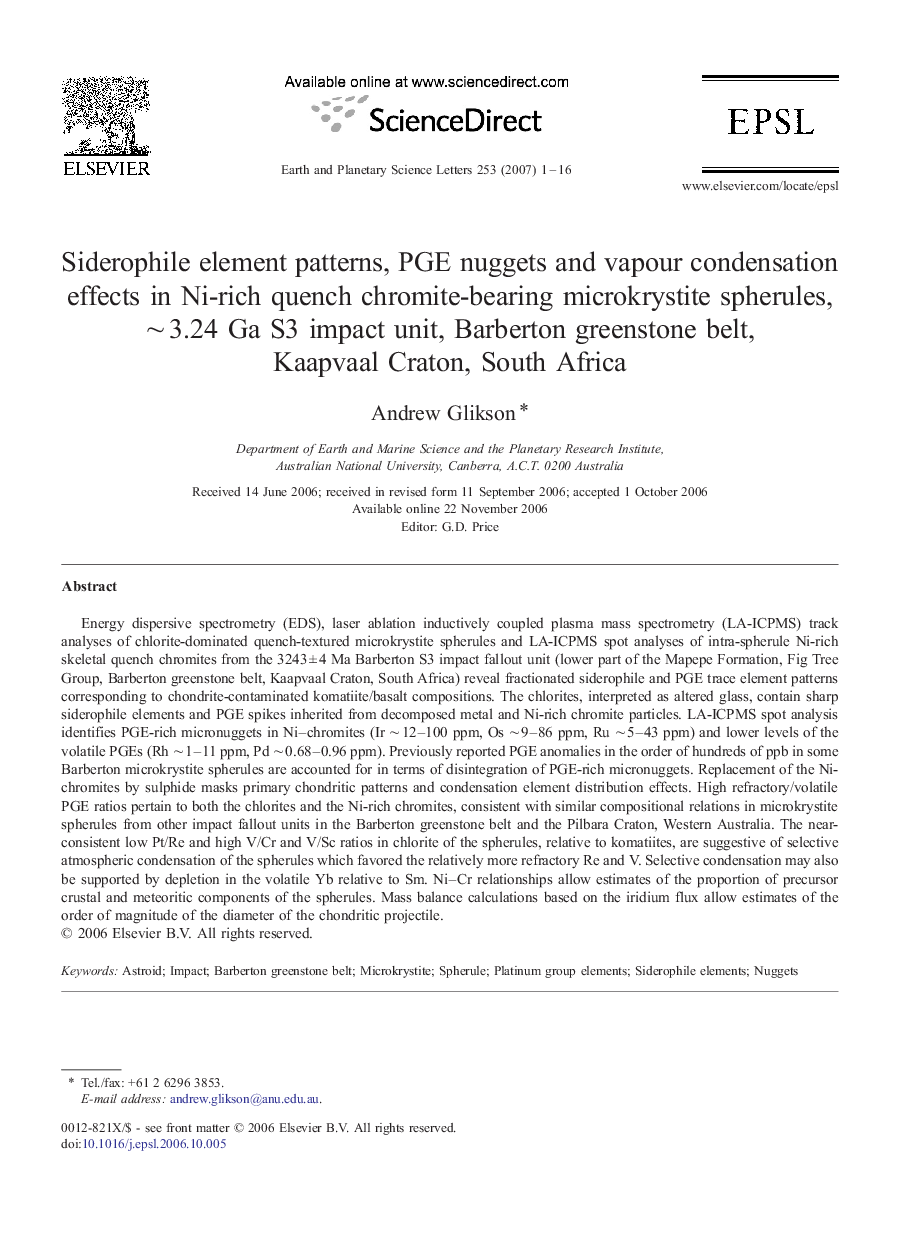| Article ID | Journal | Published Year | Pages | File Type |
|---|---|---|---|---|
| 4680614 | Earth and Planetary Science Letters | 2007 | 16 Pages |
Energy dispersive spectrometry (EDS), laser ablation inductively coupled plasma mass spectrometry (LA-ICPMS) track analyses of chlorite-dominated quench-textured microkrystite spherules and LA-ICPMS spot analyses of intra-spherule Ni-rich skeletal quench chromites from the 3243 ± 4 Ma Barberton S3 impact fallout unit (lower part of the Mapepe Formation, Fig Tree Group, Barberton greenstone belt, Kaapvaal Craton, South Africa) reveal fractionated siderophile and PGE trace element patterns corresponding to chondrite-contaminated komatiite/basalt compositions. The chlorites, interpreted as altered glass, contain sharp siderophile elements and PGE spikes inherited from decomposed metal and Ni-rich chromite particles. LA-ICPMS spot analysis identifies PGE-rich micronuggets in Ni–chromites (Ir ∼ 12–100 ppm, Os ∼ 9–86 ppm, Ru ∼ 5–43 ppm) and lower levels of the volatile PGEs (Rh ∼ 1–11 ppm, Pd ∼ 0.68–0.96 ppm). Previously reported PGE anomalies in the order of hundreds of ppb in some Barberton microkrystite spherules are accounted for in terms of disintegration of PGE-rich micronuggets. Replacement of the Ni-chromites by sulphide masks primary chondritic patterns and condensation element distribution effects. High refractory/volatile PGE ratios pertain to both the chlorites and the Ni-rich chromites, consistent with similar compositional relations in microkrystite spherules from other impact fallout units in the Barberton greenstone belt and the Pilbara Craton, Western Australia. The near-consistent low Pt/Re and high V/Cr and V/Sc ratios in chlorite of the spherules, relative to komatiites, are suggestive of selective atmospheric condensation of the spherules which favored the relatively more refractory Re and V. Selective condensation may also be supported by depletion in the volatile Yb relative to Sm. Ni–Cr relationships allow estimates of the proportion of precursor crustal and meteoritic components of the spherules. Mass balance calculations based on the iridium flux allow estimates of the order of magnitude of the diameter of the chondritic projectile.
